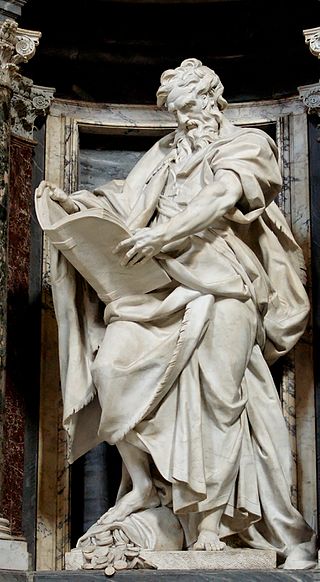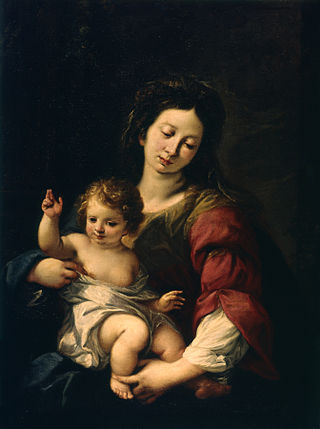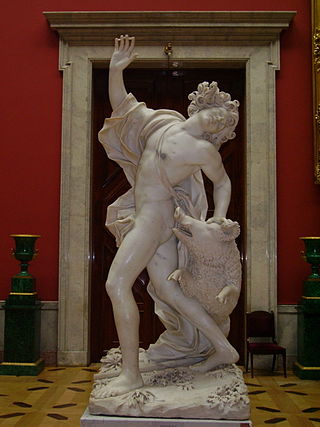Related Research Articles
Varese is a city and comune in north-western Lombardy, northern Italy, 55 km (34 mi) north-west of Milan. The population of Varese in 2018 was 80,559.
Ercole Ferrata was an Italian sculptor of the Roman Baroque.

The Sacri Montiof Piedmont and Lombardy are a series of nine calvaries or groups of chapels and other architectural features created in northern Italy during the late sixteenth century and the seventeenth century. They are dedicated to various aspects of the Christian faith and are considered of great beauty by virtue of the skill with which they have been integrated into the surrounding natural landscape of hills, forests and lakes. They also house important artistic materials in the form of wall paintings and statuary. In 2003, they were named as a World Heritage Site.

Orta San Giulio is a town and comune (municipality) in the Province of Novara in the Italian region of Piedmont, located about 100 kilometres (62 mi) northeast of Turin and about 40 kilometres (25 mi) northwest of Novara. It is one of I Borghi più belli d'Italia.

Pier Francesco Mazzucchelli was an Italian painter and draughtsman who was active in Milan. He is mainly known for his altarpieces, but his outstanding achievements are large decorative frescoes for the Sacro Monte di Varese and the Sacro Monte di Varallo.

Camillo Rusconi was an Italian sculptor of the late Baroque in Rome. His style displays both features of Baroque and Neoclassicism. He has been described as a Carlo Maratta in marble.

Dionigi or Dionisio Bussola (1615–1687) was an Italian sculptor active mainly in Milan and its environs during the Baroque era.

Antonio d'Enrico, called Tanzio da Varallo, or simply il Tanzio was an Italian painter of the late-Mannerist or early Baroque period.

Carlo Francesco Nuvolone was an Italian painter of religious subjects and portraits who was active mainly in Lombardy. He became the leading painter in Lombardy in the mid-17th century, producing works on canvas as well as frescoes. Because his style was perceived as close to that of Guido Reni he was nicknamed il Guido della Lombardia.

The Sacro Monte di Orta is a Roman Catholic devotional complex in the comune of Orta San Giulio on the summit of a hill known as San Nicolao, which faces the western shore of Lake Orta. It is one of the Sacri Monti of Piedmont and Lombardy, included in UNESCO World Heritage list.

The Sacred Mountain of Belmonte is a Roman Catholic devotional complex in the comune of Valperga, in the Metropolitan City of Turin. It is one of the nine Sacri Monti of Piedmont and Lombardy, included in UNESCO World Heritage list.

Antonio Busca (1625–1686) was an Italian painter of the Baroque period, mainly active in Lombardy.

The Sacro Monte di Oropa is a Roman Catholic devotional complex in the province of Biella, Piedmont, northern Italy. It is one of the nine Sacri Monti of Piedmont and Lombardy and is on the UNESCO World Heritage list.

Giuseppe Mazzuoli was an Italian sculptor working in Rome in the Bernini-derived Baroque style. He produced many highly accomplished sculptures of up to monumental scale but was never a leading figure in the Roman art world.

The Sacro Monte di Varese is one of the nine sacri monti in the Italian regions of Lombardy and Piedmont which were inscribed on the UNESCO list of World Heritage Sites in 2003. It has an altitude of 807 metres above sea level.

A calvary, also called calvary hill, Sacred Mount, or Sacred Mountain, is a type of Christian sacred place, built on the slopes of a hill, composed by a set of chapels, usually laid out in the form of a pilgrims' way. It is intended to represent the passion of Jesus Christ and takes its name after Calvary, the hill in Jerusalem where Jesus was crucified.
CoEur is a Christian devotional and hiking route in Italy and Switzerland. Its Italian subtitle, Nel cuore dei cammini d'Europa, translates as "In the heart of Europe's paths".

The Path of Saint-Charles is an historical, artistic and devotional route which follows the travels of saint Charles Borromeo from Arona, his native town, and Viverone, where the path joins the Via Francigena.

The Church of Our Lady of the Graces is a Gothic-style, Roman Catholic church in Varallo Sesia, province of Vercelli, region of Piedmont, Italy. The church was built, together with the adjacent Franciscan convent, by padre Bernardo Caimi between 1486 and 1493. At this time, the construction of the Sacro Monte was also beginning. In December 1931, Pope Pius XI gave the church the title of Minor Basilica.

Cristoforo Prestinari was an Italian artist of the Baroque period who worked mainly in the field of sculpture, brother of the artist Marco Antonio Prestinari. Trained in the workshop that his father Michele kept open in Val d'Intelvi, he later reached Milan, where he became appreciated, so much so that the Fabbrica del Duomo assigned him important works.